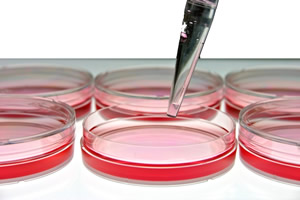
Semen analysis (spermogram) provides information on the number and quality of sperm, as well as on the amount of seminal fluid that a man secretes.
This is one of the first tests to find out if a man has a problem becoming a father. In one third of couples who fail to have a child (infertility), abnormalities in the seminal fluid or sperm are detected.
Semen analysis tests include:
Volume - a measure of the amount of seminal fluid (ejaculate) that is released during ejaculation.
Color a medium-thick liquid with a white, yellowish or slightly bluish color,with a very specific smell.
Liquefaction time - semen is initially thick, gel-like and normally liquefies within 20-30 minutes.
Sperm count - the number of sperm in one milliliter (concentration) and the total number in the entire ejaculate are calculated.
Sperm morphology - the percentage of sperm with normal / abnormal shape is assessed.
Motility - the percentage ratio of spermatozoa that move forward normally / abnormally is determined.
pH - a measure of the acidity (low pH) or alkalinity (high pH) of the sperm (ejaculate).
Leukocytes / round cells - normally not contained in the ejaculate.
Fructose level - estimates the level of sugar (energy source for sperm).
Why is a spermogram done?
- To determine if a man has a reproductive problem that causes infertility
- To check for a successful vasectomy.
How to prepare:
It is recommended to have sexual abstinence for 2-5 days before the semen analysis. This is necessary for higher reliability of the test, and the number of sperm is the highest. If possible, abstinence from sexual activity for more than 1-2 weeks before the test is not recommended, because such a long period reduces active spermatozoa.
It is also good to abstain from alcohol for a few days before the test. Be sure to mention if you are taking any medications or herbal supplements.
How is it done:
Excretion by masturbation takes place in a sterile container. This is done in a specially designated room in the clinic, or at home if you live nearby, or transport allows you to quickly bring the material.
Separation can also be done during sex when the penis is withdrawn from the partner before ejaculation (coitus interruptus). Then, you ejaculate into a sterile container. This method can be used after a vasectomy to test for the presence of sperm. Another option is to use a condom that does not contain components that kill sperm (spermicides). If you ejaculate at home, the ejaculate must be brought to the clinic within 1 hour. Place the container away from direct sunlight. If it's a cold day, keep the container close to your body to maintain a temperature as close to body temperature as possible. Do not refrigerate the ejaculate ..
Since the quality of semen varies from day to day, two or three different samples can be tested in a 3-month period for a more accurate diagnosis.
A semen analysis to test for vasectomy is done after six weeks.
Production does not cause discomfort. But you may feel embarrassed because of the place or some other reason. Do not hesitate to share this with the doctor so that you can be reassured.
Results:
Results are usually available within the day.
Some conditions are associated with low or no sperm count. For example, orchitis, varicocele, Klinefelter's syndrome, radiation therapy to the testicles, or diseases that cause testicular atrophy, such as mumps.
If a low sperm count or a high percentage of abnormal sperm is observed, further tests may be needed. For example, measuring the levels of hormones such as testosterone, luteinizing hormone (LH), follicle-stimulating hormone (FSH), or prolactin. A testicular biopsy may be necessary if sperm concentration or motility is too low.
Reasons why you cannot take the test
or the results will not be reliable:
- Taking certain drugs, hormones (testosterone, estrogens), some chemotherapeutic drugs.
- Caffeine, alcohol, cocaine, marijuana, smoking.
- Herbal extracts that contain a high concentration of echinacea.
- Semen that has been chilled – motility rates will be low if the sperm is chilled.
- Exposure to radiation, certain chemical agents such as pesticides or spermicides, and prolonged exposure to high temperature.
- Incomplete ejaculation – this is more likely to happen if a method other than masturbation is used; or in case of ejaculation - part of the liquid falls outside the container.
- Sexual abstinence of 7 days or more can negatively affect the quality and quantity of sperm.
Something to think about:
Sperm obtained at home must be brought to the clinic within one hour. Do not expose to direct sunlight. If it's a cold day outside, keep the container close to your body.
Other tests:
- Presence of anti-sperm antibodies.
- Postcoital test.
- Sperm mucus penetration test – it is checked whether the sperm can pass through the cervical mucus and the fallopian tubes to reach and fertilize the egg.
- Sperm penetration assay – it is checked whether the sperm can fuse with the egg. Hamster eggs are used, which are mixed with sperm in a laboratory. The number of spermatozoa that penetrate the eggs (capacitated spermatozoa) is determined.
